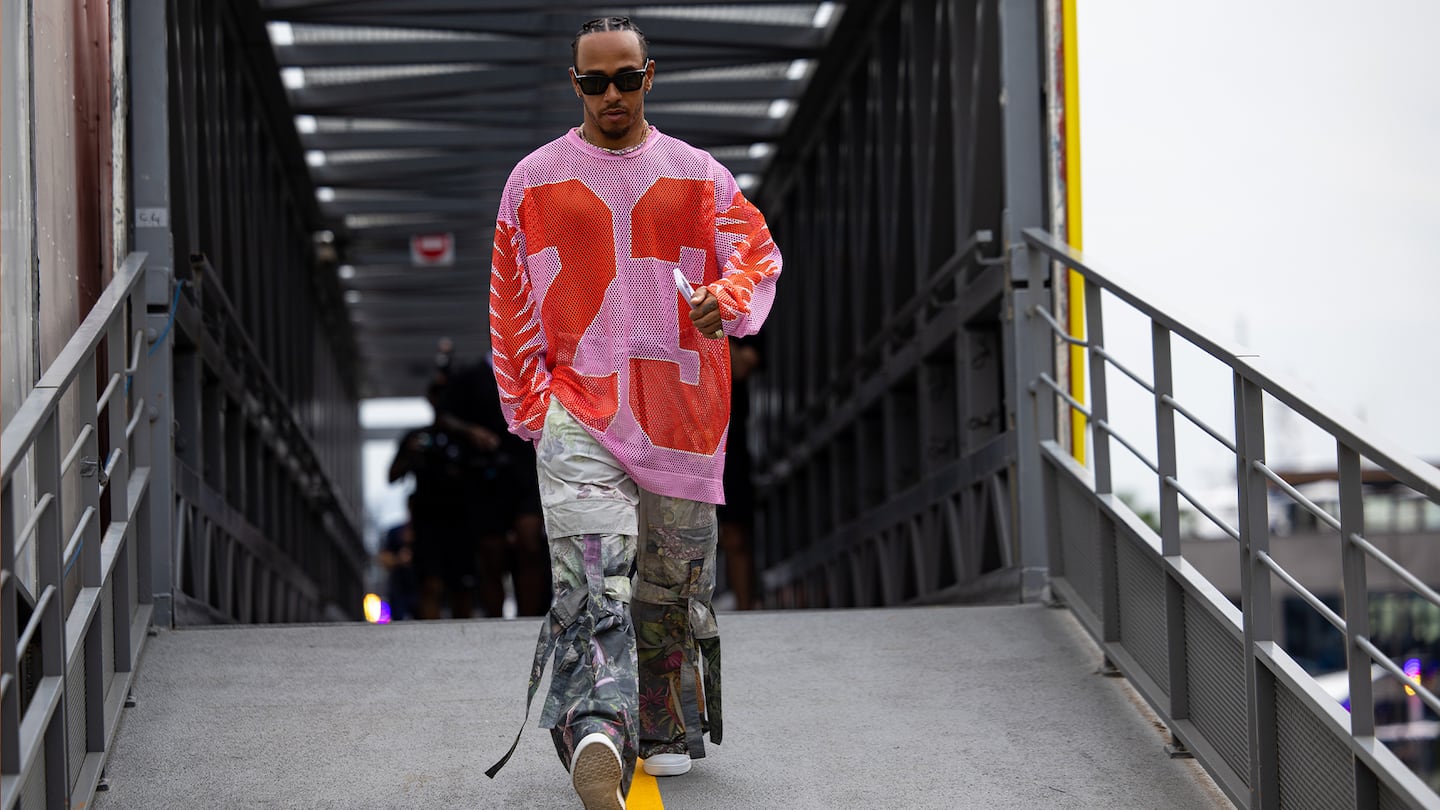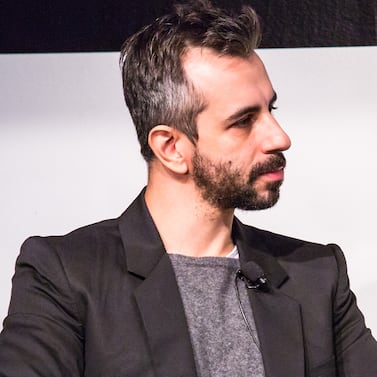
Agenda-setting intelligence, analysis and advice for the global fashion community.

Agenda-setting intelligence, analysis and advice for the global fashion community.

To get a snapshot of fashion’s sports-marketing playbook in 2023, start with the tie-up between Louis Vuitton and LeBron James.
The NBA star recently became a new face of the brand, appearing in a campaign that popped up on billboards in New York on Oct. 24. But it was James’ entry into Denver’s Ball Arena that night for his team’s season opener that caused the bigger stir. For the walk from the parking lot to the locker room he wore a reported $28,000 of Louis Vuitton designed by its new menswear chief, Pharrell.
In a collaborative post, James and Pharrell shared an image of the moment on Instagram. Louis Vuitton, on its official account, instead of using the glossy campaign image also posted a shot of James’ arrival.
At the other end of the spectrum is an emerging name like Shedeur Sanders, quarterback for American college football’s Colorado Buffaloes, who in July shared a post sponsored by Urban Outfitters to his Instagram.
ADVERTISEMENT
As detailed in BoF’s latest case study, fashion has fully woken up to sport’s massive marketing potential. By 2030, the global sport-sponsorship market is expected to reach $109.1 billion, up from $63.1 billion in 2021, according to PwC. Driving it is not just the record viewership of sporting events but also the unprecedented star power of athletes.
That’s thanks in large part to social media, which lets sports stars connect with fans in ways they couldn’t previously and lets fans track players off the field. Deloitte has found approximately 80 percent of Gen-Z fans follow a professional athlete online, which can influence the brands they follow and the products they buy.
Fashion has become a vital piece of an athlete’s image and branding, enabled by moments like the tunnel walk, pictures of which frequently circulate online. Former NBA player JJ Reddick once griped that some athletes even seem more concerned with getting a pregame fit on Instagram than winning.
“You stress over outfits for days,” Golden State Warriors star Stephen Curry told the New York Times in 2016, during his team’s battle against LeBron James and the Cleveland Cavaliers for the NBA championship, “and you wind up wearing it for 30 seconds when you walk from the parking lot to the locker room.”
While this overlapping of fashion and sports isn’t totally new, it’s reached novel heights in recent years. Athletes who grabbed attention with their style like Joe Namath, the former American football quarterback who turned heads with his big fur coats, or Dennis Rodman, the gender-bending former basketball player, were once the exception. These days you’re as likely to see Formula 1 driver Lewis Hamilton or an NFL player like Travis Kelce, the Kansas City Chiefs tight end who’s dating Taylor Swift, turn up in a full designer look as not.
And they will, of course, post that look to Instagram.
The rise of social platforms gave athletes new tools to build themselves as brands separate from their teams and sports by letting them offer fans more access to their lives on and off whatever playing surface they compete on. Chinese-American skier Eileen Gu, for instance, probably posts as many photos of travelling and attending events, including the runway shows she sometimes walks in, as she does of her time on the slopes.
As of 2021, US college athletes such as gymnast Livvy Dunne were able to start making money from their names and images as well, opening up the opportunity for brand endorsements. Some can make as much as $25,000 for a TikTok post, according to Bloomberg.
ADVERTISEMENT
It creates a natural opportunity for fashion businesses to work themselves into posts that can help them reach audiences that can be far larger than their own in some cases. James’ follower count on Instagram totals 158 million as of this writing, compared to Louis Vuitton’s 54.7 million. Dior (45.4 million followers) has similarly teamed with athletes like football phenom Kylian Mbappé (109 million followers). The most-followed person on the platform remains Cristiano Ronaldo (611 million followers).
Much as the news that Skims had become the official underwear partner of the NBA may have surprised people, it probably shouldn’t have. If anyone understands the value of high-profile personalities with giant social followings, it would be Skims co-founder Kim Kardashian.
As the BoF case study makes clear, however, it’s not enough for brands to sign up an athlete ambassador and wait for the sales to roll in. Brands need to make sure there’s alignment between their audiences and the following of the athlete or sport they’re teaming with. They will also want to think about creative ways of partnering with sports stars, which could include launching products.
Athletes need content for their Instagram posts, after all.
Disclosure: LVMH is part of a group of investors who, together, hold a minority interest in The Business of Fashion. All investors have signed shareholders’ documentation guaranteeing BoF’s complete editorial independence.
Capitalising on sport’s soaring commercial and cultural relevance is becoming a primary focus for fashion brands. Winning sports-marketing strategies today hinge on building long-term, collaborative partnerships with athletes and organisations that resonate with a brand’s target consumers, as experts in BoF’s latest case study explain.
In the key China market, sports stars are an increasingly popular choice for luxury brands aiming to broaden their appeal while limiting their exposure to scandal-prone entertainers.
High-profile athletes used to make money by inking licensing deals with retailers that use their names on jerseys and shorts. Today, sports stars like Russell Westbrook and Megan Rapinoe are launching their own labels, with full financial and creative control.

Marc Bain is Technology Correspondent at The Business of Fashion. He is based in New York and drives BoF’s coverage of technology and innovation, from start-ups to Big Tech.
From Mango to Zalando, fashion brands are using AI tools to produce faster, cheaper and more personalised campaigns — but keeping content on-brand still requires human creativity and strategic control.
The Business of Fashion’s new generative AI tool, trained exclusively on our deep archive of trusted journalism and intelligence, developed in partnership with Quilt AI. Today, we’re inviting our BoF Professional community to test it in beta mode.
As tariff shifts and geopolitical tensions complicate international trade, Swap — an e-commerce operating system that centralises cross-border operations — is emerging as a strategic ally for DTC brands pursuing global expansion. BoF sits down with co-founder and CEO Sam Atkinson to learn about his vision for unified commerce.
Tech giants like Meta and Google are striking big deals and announcing new eyewear partnerships on smart glasses after a decade of failed attempts to make the devices fashionable.
US prices for obesity-treatment pills that Eli Lilly and Novo Nordisk aim to launch next year will likely be on par with their weight-loss injections, analysts and investors say.
Musinsa did not disclose IPO details, but local media have reported the Seoul-based company could seek a valuation of about 10 trillion won ($7.2 billion) during the listing, potentially minting a fortune for founder Cho Man-ho.
Around 27 percent of the watch group’s sales last year came from the China, Hong Kong and Macau region.
Under the new deal, MCR Hotels will get Soho’s publicly traded shares, while founder Nick Jones and executive chairman Ron Burkle and his investment firm Yucaipa will retain majority control of the business.